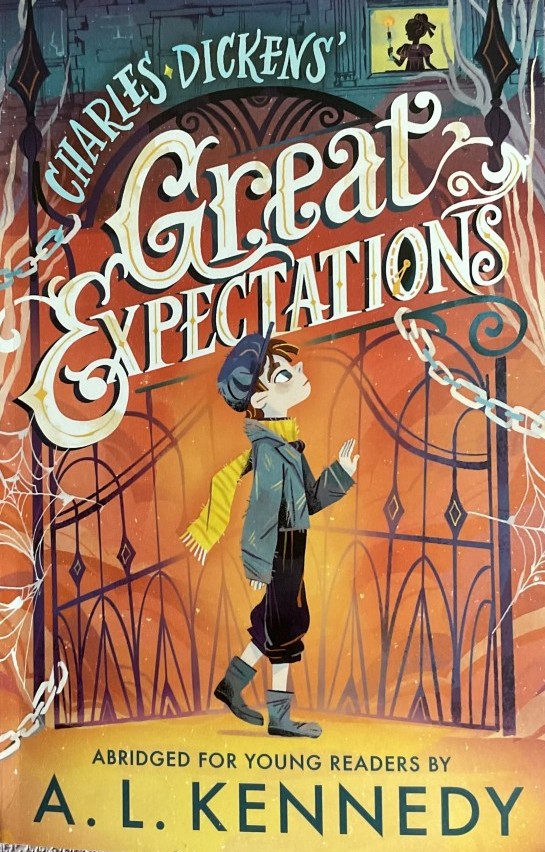Inspiring Young Readers
 posted on 16 Jul 2024
posted on 16 Jul 2024
Great Expectations by Charles Dickens, abridged for young readers by A.L.Kennedy
This rich, profoundly moving classic novel by Charles Dickens has been cited as a significant creative inspiration by so many authors. I certainly share their pleasure at the vivid opening scene when the terrified boy first meets the convict in the graveyard. And then who could not be moved by the beautifully described early relationship between Pip and Joe Gargery, the gentle blacksmith. I have also long been haunted by the characters of the fascinating but troubled Estella and her extraordinarily sadistic, heartbroken guardian Miss Havisham. And all this is only in the first part of the novel!
So, I was curious to see whether a heavily abridged version aimed at younger readers would be able to capture the complex story and special atmosphere.
It is successful in highlighting the main narrative events in surprising detail and in conveying the memorable character traits of the cast. Pip is an orphan who grudgingly appreciates being ‘brought up by hand’ and given a home by his hot-tempered elder sister and her husband Joe, but it is not nearly enough for him. His ‘great expectations’ involve getting away from them as soon as possible in order to try his hand at becoming a gentleman. After spending some time in the faded but affluent world of Miss Havisham, he sees himself differently, realises that he is rather ashamed of his home and confesses to his old friend Biddy: ‘I am disgusted with my work and my life!’ When after four years drudging away as Joe’s apprentice he is given an opportunity by Mr Jaggers representing a mysterious benefactor ‘to improve his education and maintenance’ in London, he jumps at the chance.
When he arrives to begin his new life in the big city, he soon learns the value of having another friend, Herbert Pocket, an affable young gentleman who is a distant relation to Miss Havisham, and they enjoy some very jolly times together. Another memorable moment is very well described in this version when I was glad to see the focus on Pip’s reinvented pompous self. This causes him to be thoroughly discomfited by Joe’s awkward visit to his splendid new lodgings. The blacksmith shows himself to be much more self- aware when he decides to cut the visit short:
‘If there’s been any fault in today, it’s mine. You and me should not be together anywhere but what is private. It ain’t that I am proud, but that I want to be right. You won’t find half so much fault in me if you come and put your head in at the forge window and see Joe the blacksmith there in the old burnt apron.’
This is a relatively slim book so there are several necessary omissions and small changes to the original story, but these do not get in the way of a well written and compelling tale. For a first-time reader who wants an introduction to the work of Charles Dickens, this may be enough to encourage further exploration. At the same time, many able young readers may prefer to immerse themselves in the unabridged version which, although much more demanding of time, would be worth it in my view. It has certainly made me want to re-read the original novel.
I recommend this very accessible book published by Walker Books which should be available from your local independent bookshop – who will be happy to order it for you if they don’t have it on their shelves.
Karen Argent
July 2024